In the last year, I have been making an effort to chronicle the historical context of each of the legendary creatures coming out of the Commander products. When I started with Commander 2011, it didn’t seem unusual to me that the cards I was referencing may have been out of date for where Commander was in 2020. But as I was recently working on my Commander 2015 installment, I was taken aback by how several of the cards that crossed my mind were no longer seeing much play anymore.
While I have focused in the past on cards printed into Commander products that were almost immediately forgotten to time, today I look back and analyze cards that once saw play but have dwindled in popularity. I want to analyze what context made them playable at the time and what has changed. Maybe I will inspire some cards to receive a resurgence, or we can just laugh at what was tech seven years ago.
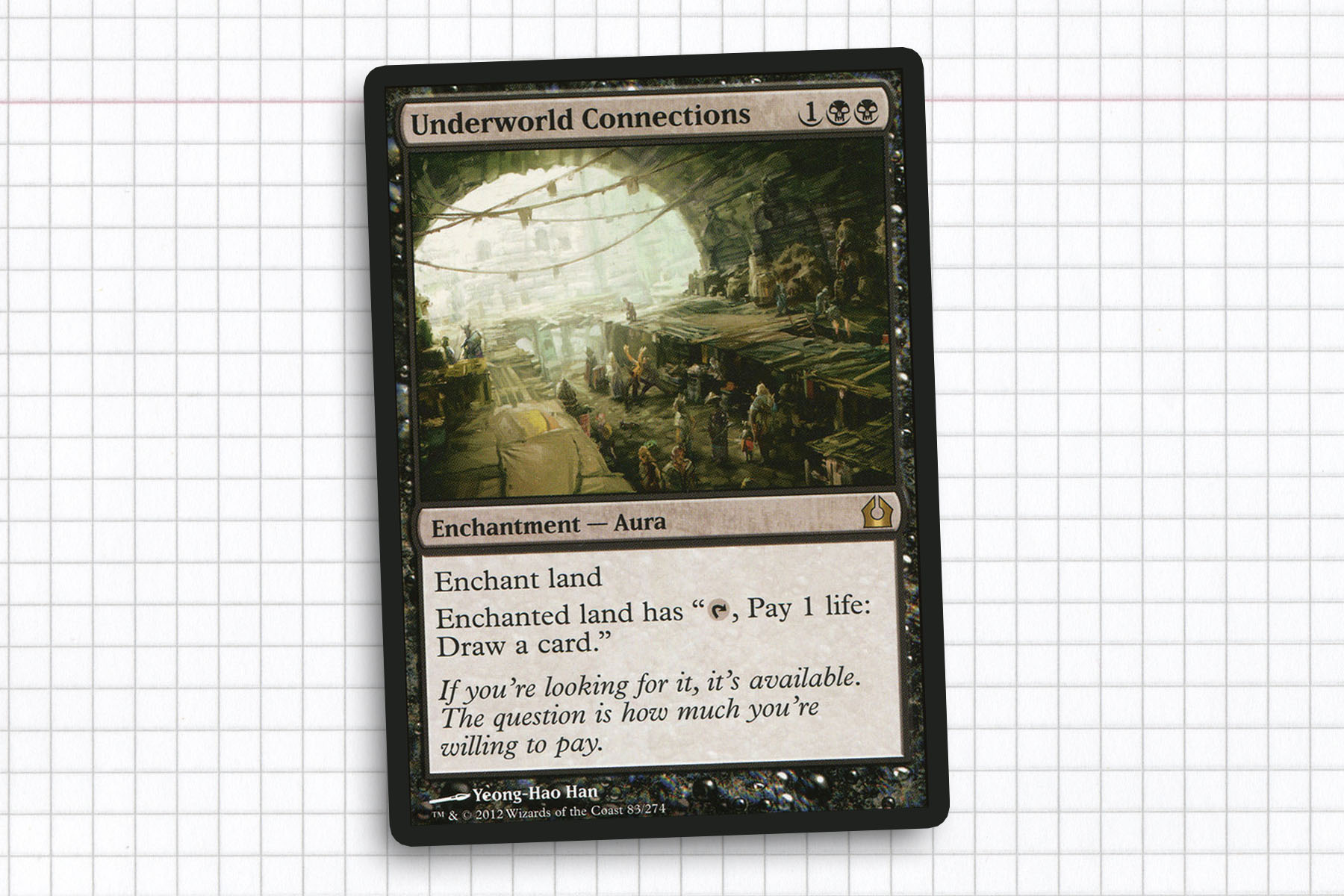
Underworld Connections
Every so often, the community compares Phyrexian Arena to Read the Bones; a conversation about explosive versus gradual card draw is had, and we scuttle away to evaluate our card choices. While the popularity of Phyrexian Arena has waned some in the last decade, Underworld Connections may have taken the bigger hit—showing up in 9128 decks. Underworld Connections swelled in popularity initially as a staple in Erebos, God of the Dead and Mogis, God of Slaughter decks, due to the devotion mechanic being en vogue. Additionally, Phyrexian Arena has always been on the spendier side and at the time of Connection’s printing, had not seen a meaningful reprinting since Ninth Edition—showing up in Planechase and Duel Decks: Phyrexia vs. the Coalition in the intervening time.
While not as powerful as the Arena, it certainly had the upside of being able to replace itself immediately in the late game. The issue, as I see it, is that as players tune their decks, this is the kind of card that falls by the wayside. Yes, it can start the card draw immediately, but it requires effort to keep the cards coming every turn. Ultimately, outside of some fanfare when Vilis, Broker of Blood was previewed, I haven’t seen Underworld Connections at a table in a very long time. I think it is a fine card to recommend to players working on a budget, as it fills the role of more expensive cards very well in that context.
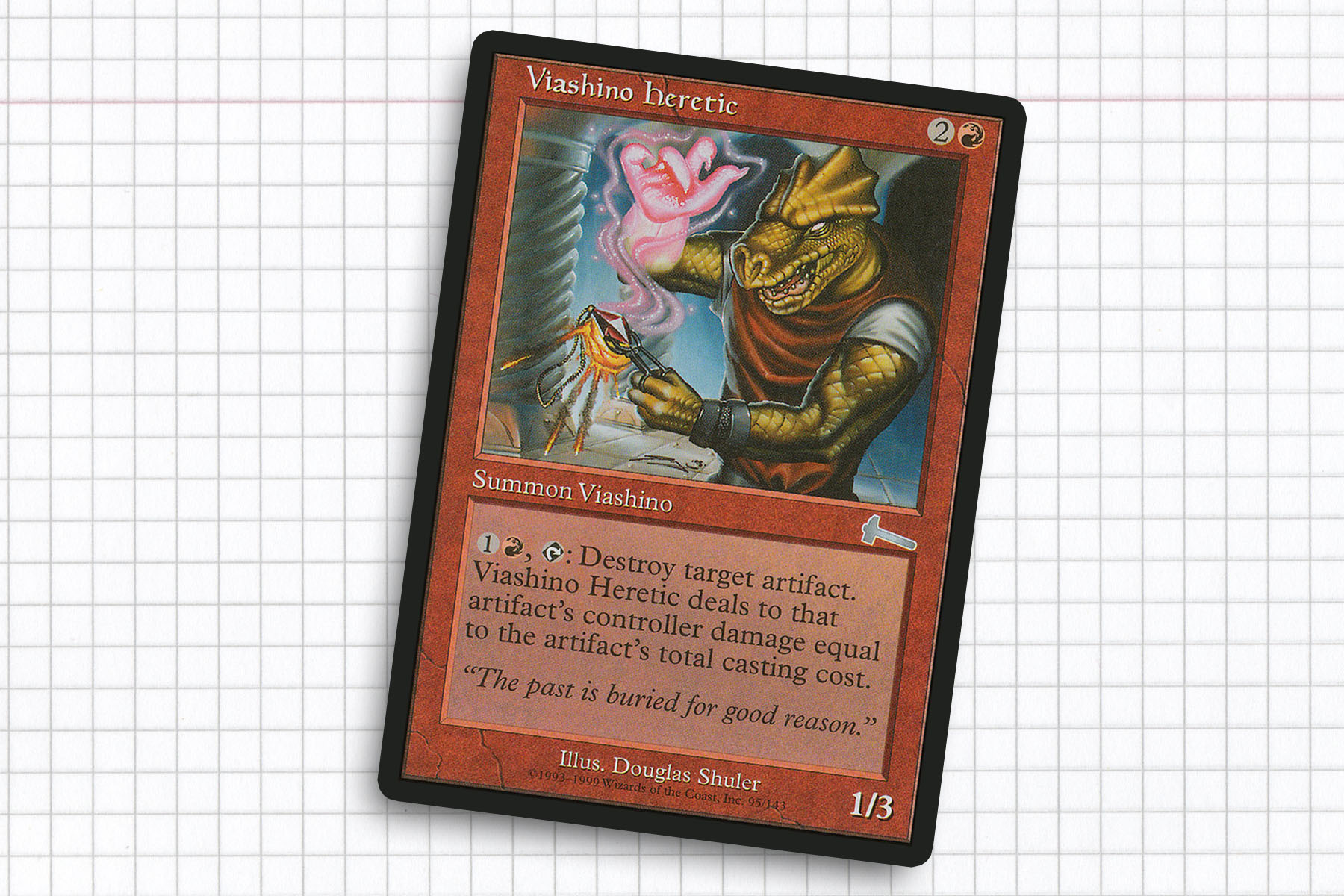
Viashino Heretic
In the more innocent days of the format, Viashino Heretic (2144) was a hot commodity. I would mostly attribute this to the healthy use of Sharuum the Hegemon in the early 2010s. While consistent artifact removal wasn’t going to outright stop the deck from dominating in a game, one could at least garner some political points by keeping Master Transmuter or Unwinding Clock in check. Cute things like that have not kept up with the times though, as even the tangentially similar Shenanigans sees more play and Vandalblast just outright outclasses the Heretic.
My favorite piece of secret tech with Viashino Heretic is that while artifact removal is certainly helpful, the damage coming from the second half of their ability is not dependent on the targeted artifact being destroyed. This lead to at least a few games where a Darksteel Colossus owner found themselves down quite a bit of life before they had the chance to attack with it.
Originally, this spot was going to be dedicated to Dwarven Miner, as the card has also disappeared from the format in fairly equal measure. But whereas I would like to see Viashino Heretic used more, lands hold enough “social shroud,” that it’s understandable that players might have just wanted to avoid the negative stigma of depriving people of mana. You don’t even need to be doing cruel things to make this card and Thornbite Staff overperform. I would endorse it to help catch a few opponents off guard in the near future.
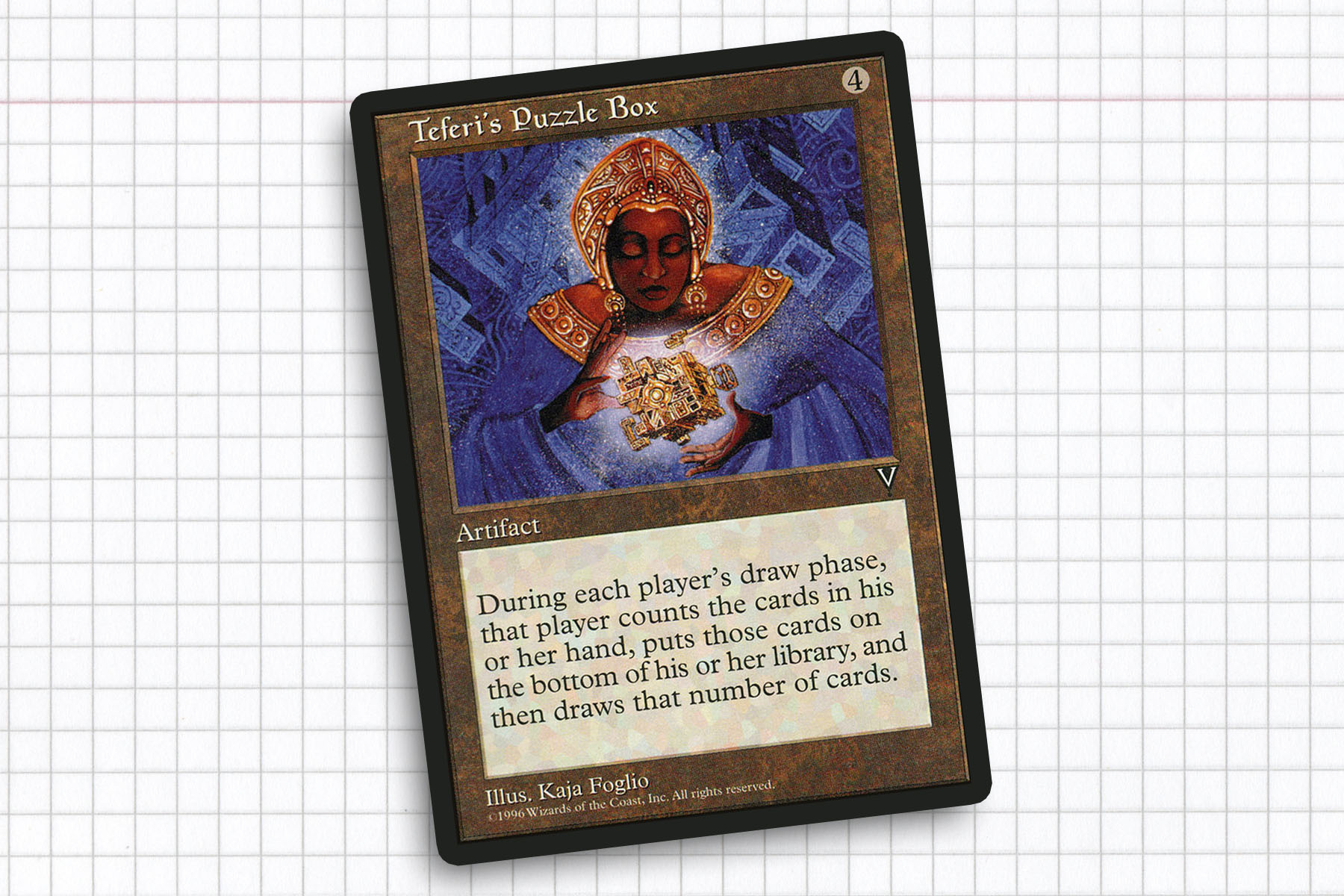
Teferi’s Puzzle Box
Teferi’s Puzzle Box still shows up in nearly 7000 decks,so its safe to say that it never really went away. I just think the decks that really highlighted its power have dwindled in popularity to the point that a sighting is far more rare nowadays. Personally, the Puzzle Box’s brightest days came in 2013 with the printing of Nekusar, the Mindrazer and when The Locust God premiered in 2017. Both decks weaponized the card draw in their own ways, especially since neither deck tended to care much about the contents of own hands, welcoming the ever-changing card selection.
I think that factor is what caused this card to become a little more niche. With Teferi’s Puzzle Box in play, you lose a lot of agency when considering your future turns, since you know that none of the cards in your hand are going to be there after your draw step. And for as much as I might bemoan stalled board states, drawing a fresh hand every turn hyperextends turns far more than any time wasted on considering optimal attacking and blocking. I would personally like to get some use out of this card again; but outside of setting up the bottom of my library for Grenzo, Dungeon Warden, I don’t know what would be fresh enough to really inspire me to sleeve the card up again.
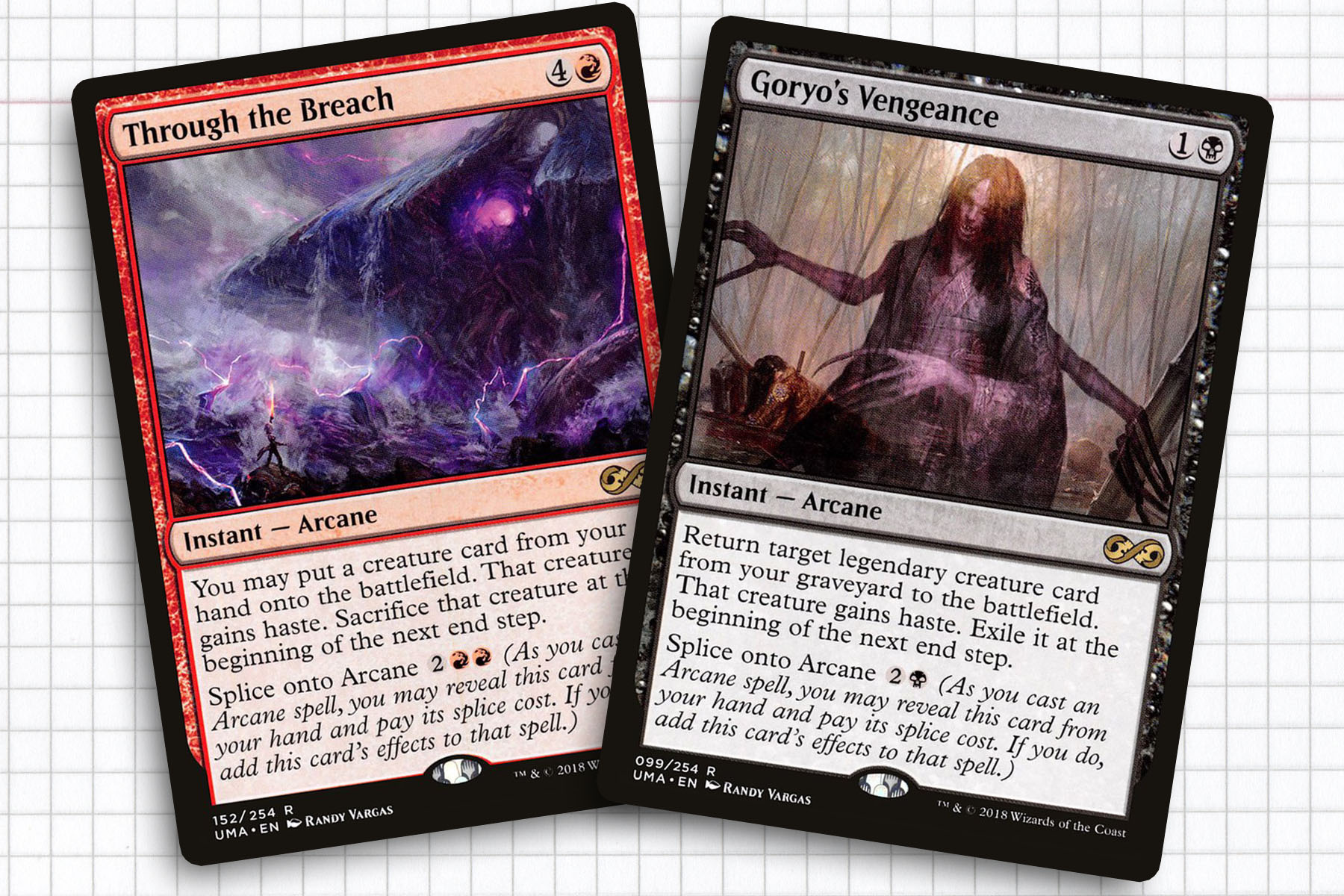
Through the Breach & Goryo’s Vengeance
I was hesitant to include these two cards on this list, because their current numbers led me to believe that I may be having a bias as to how popular these cards were to begin with. Neither Through the Breach nor Goryo’s Vengeance is so mechanically unique that they are required staples, but I was at least surprised that they currently show up in such little numbers. This bias may come from Minneapolis having a fairly large contingency of Legacy and Cube players. As both have been historically used within those formats, it is possible that I was seeing these two cards in games more often simply because the players in my vicinity had them on hand to add to their decks.
A lot of focus is often put on a player’s general, so I’m surprised that Goryo’s Vengeance (996) doesn’t seem more play. Even outside of the general, many useful creatures happen to also be legendary. With the right set up and at instant speed, Birgi, God of Storytelling pays for themself, Vito, Thorn of the Dusk Rose could swing a game in your favor, or Wrexial, the Risen Deep could cast Time Stretch out of an opponent’s graveyard. All to say, I’m surprised this card hasn’t inspired a little more passion following a reprint to put it in front of more player’s eyes.
In a similar way, Through the Breach (389) has a remarkably low showing. I will admit, I’ve never been so inspired by the card as to purchase a copy to test it out for myself. But once you see Through the Breach as not just a way to attack, but also to sacrifice something, a whole lot can open up to you. I’ve lost my battlefield to a well-timed Elesh Norn, Grand Cenobite before and watched my opponent rocket back up in life with a surprise Kokusho, the Evening Star a few different times. Maybe I should be playing more counter magic.
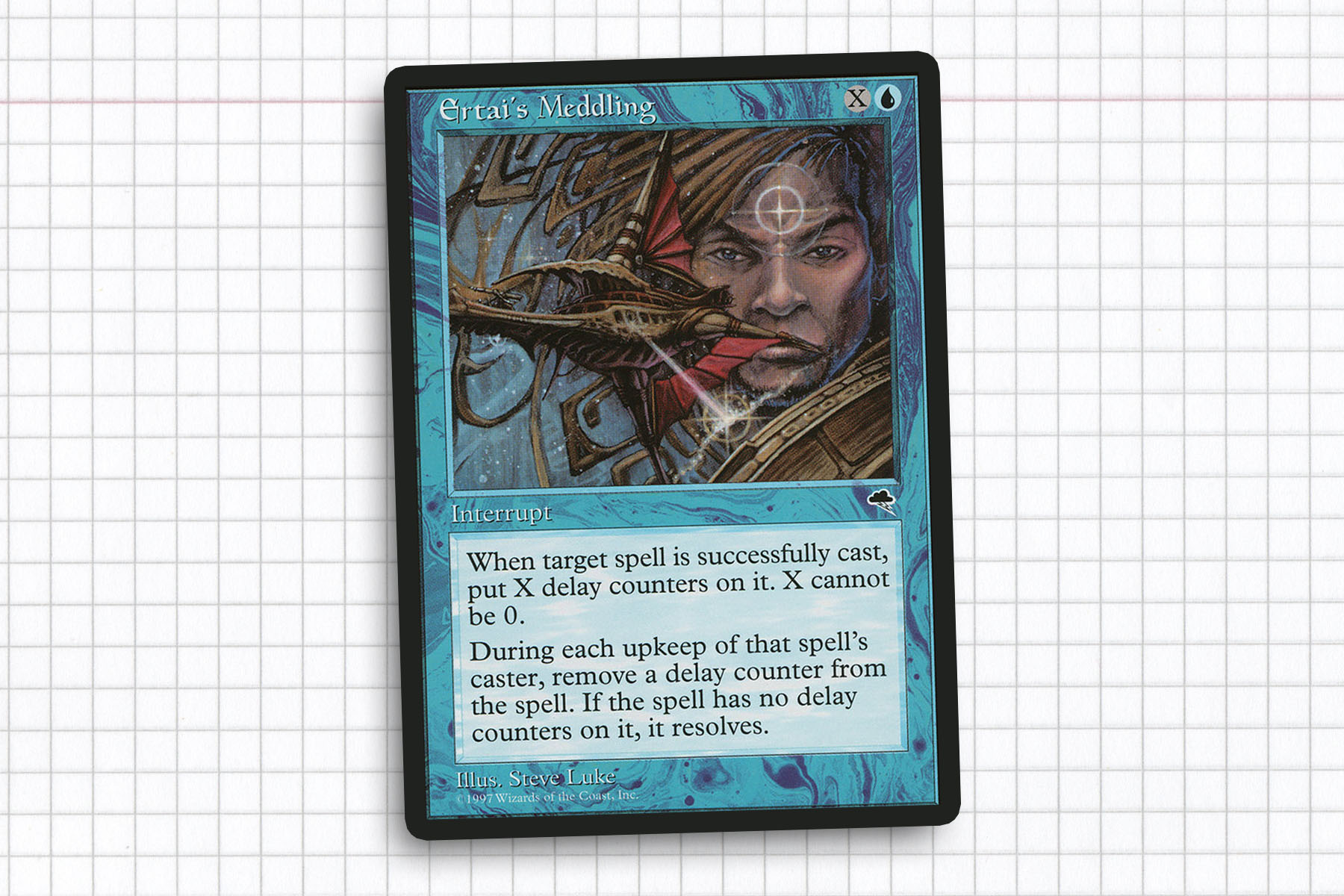
Ertai’s Meddling
Finding the best counter magic for a deck can leave you with a lot of decision paralysis—no surprise then that Ertai’s Meddling (491) has been lost to time. This card was very unique for the time, as it doesn’t counter a spell, it simply exiles it. Even with that said, the closest comparable card we had was Venser, Shaper Savant. This card saw healthy play amongst some of the early playgroups I interacted with. At the time, I was really into soft counter magic, so a card that didn’t sour my opponents left a good impression on me.
The greatest boon I see for this card is that it may actually be a better counterspell than it was at the time. As Commander has sped up and games have become admittedly shorter in most respects, casting this and having X be two or three could leave the spell in exile for the remainder of the game, with the copy never being put onto the stack.
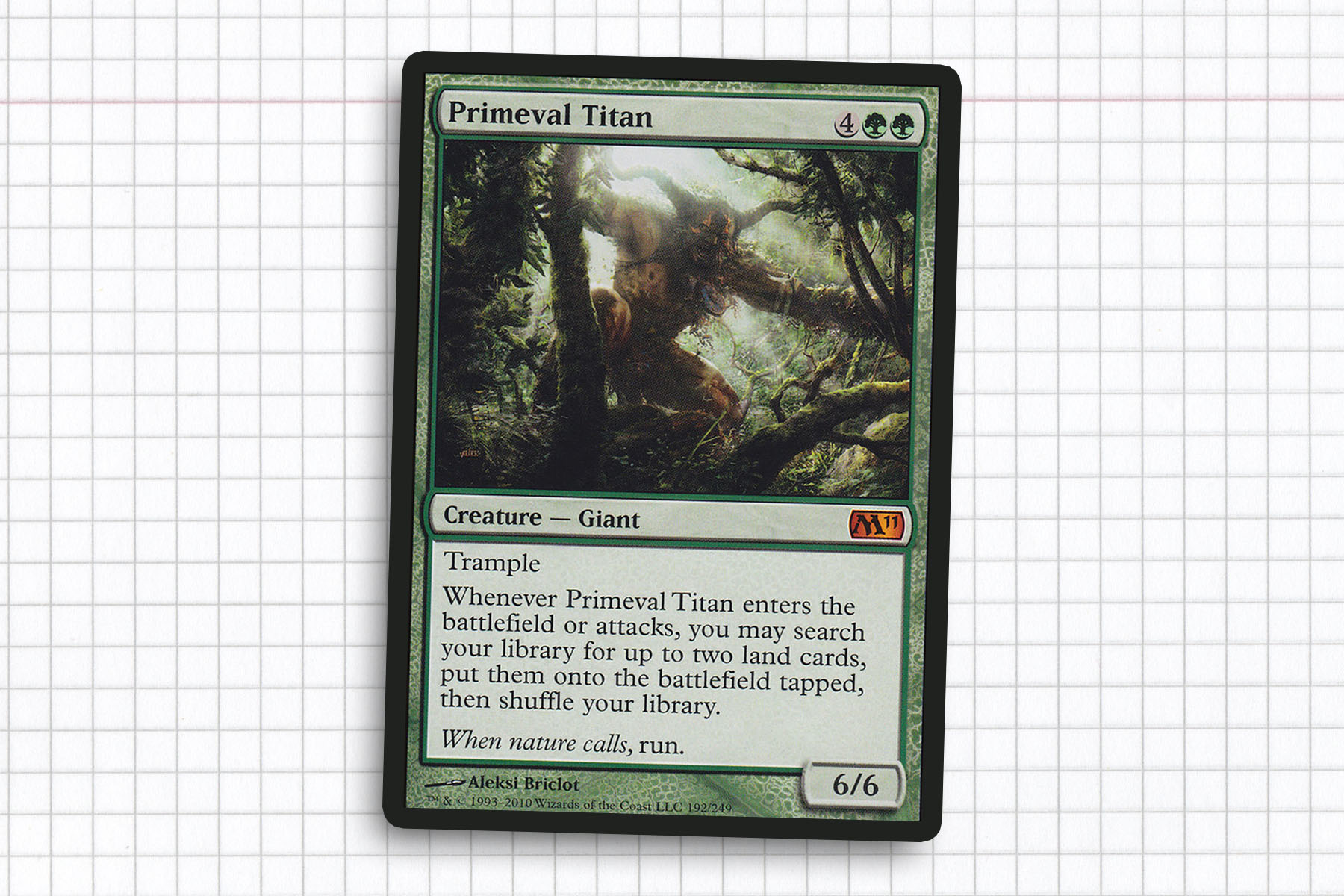
Primeval Titan
Back in the day, Primeval Titan (5) was everywhere, because who doesn’t want more lands? It was a staple for green decks and the first thing non-green players would cast Bribery out of their opponent’s libraries. No question, the format warped around it. Then it got banned, so we stopped playing with it.
I hope that today either brought a feeling of nostalgia or introduced readers to cards that they may not have heard of because they didn’t get into the format until after some of these cards had lost most of their popularity. I don’t even think that all of these cards need to come back to the format, as in some ways the format has moved on without them. I do think there is something to be gained from playing with cards that other people are not expecting.
This is a topic I think I will find myself returning to in the future. But it might take a more time for me to find a good crop of cards to wax nostalgically about. Please feel free to look over my thoughts on the legendary creatures of Commander 2013 and Commander 2014, in addition to the book end installments referenced above.
Ryan Sainio is a Graphic Designer who writes about EDH and the EDH community. He has been playing Magic: the Gathering since 7th Edition in 2002 and values flavorful and fun gameplay over competitively optimized decks.

